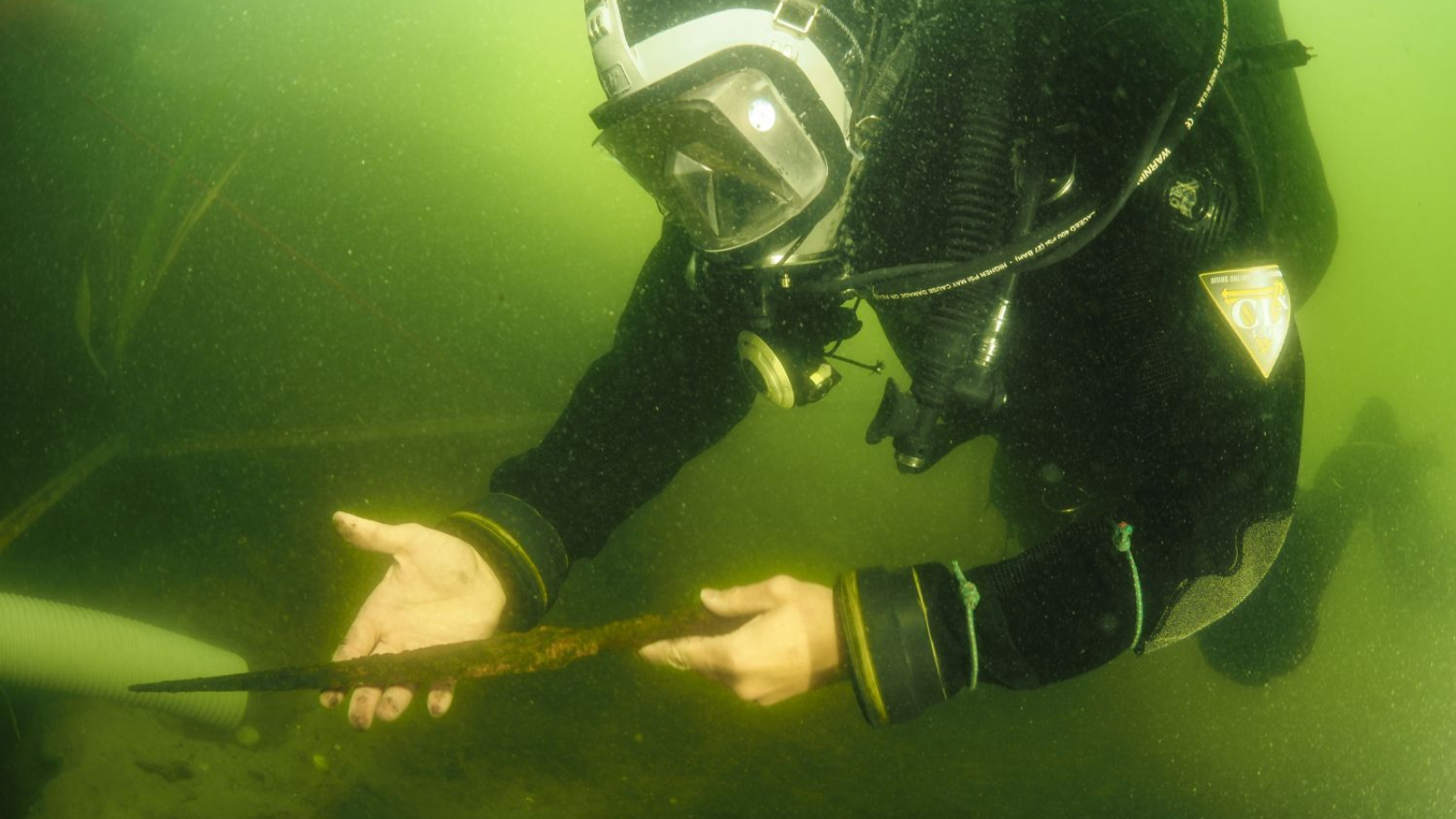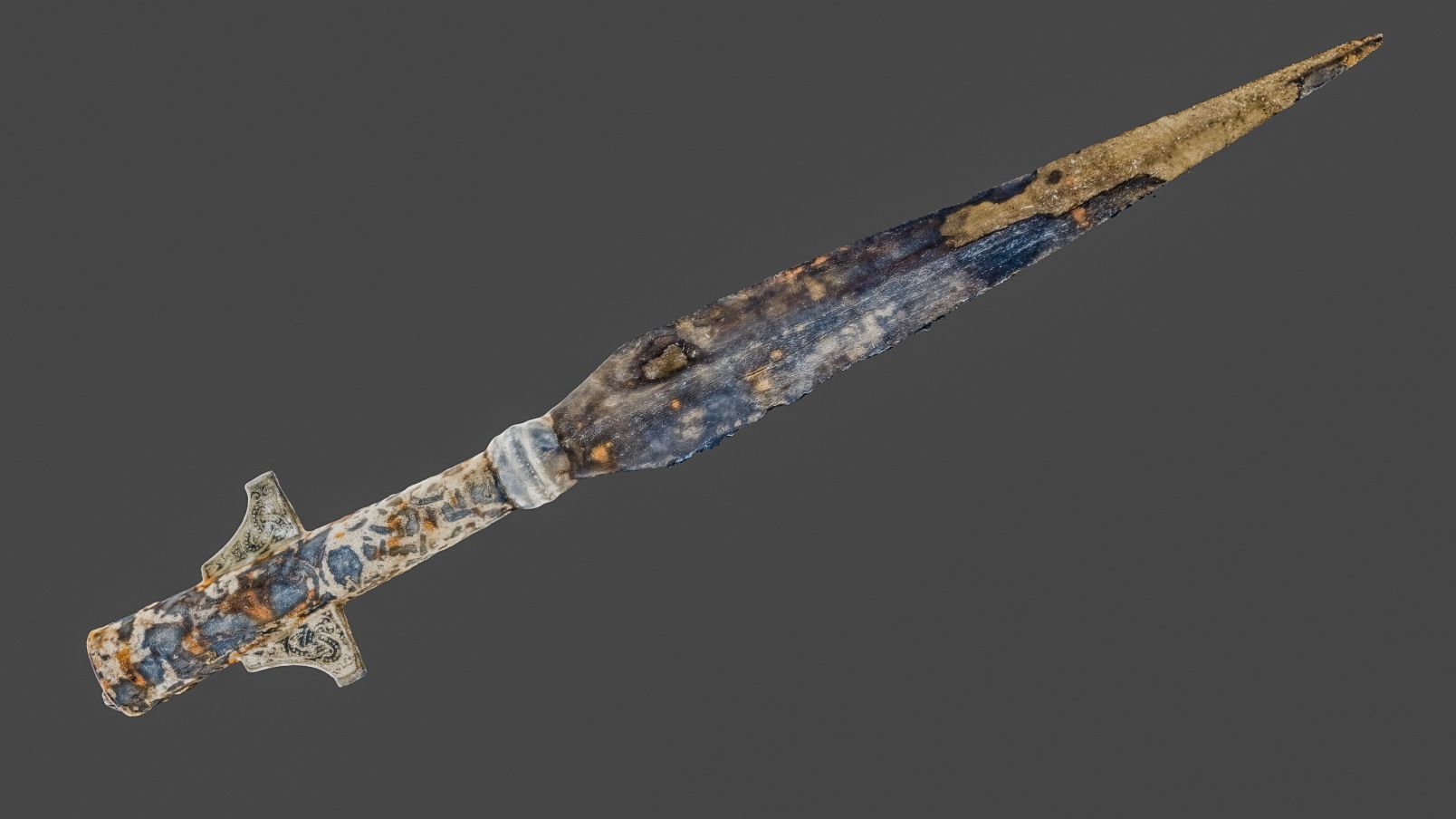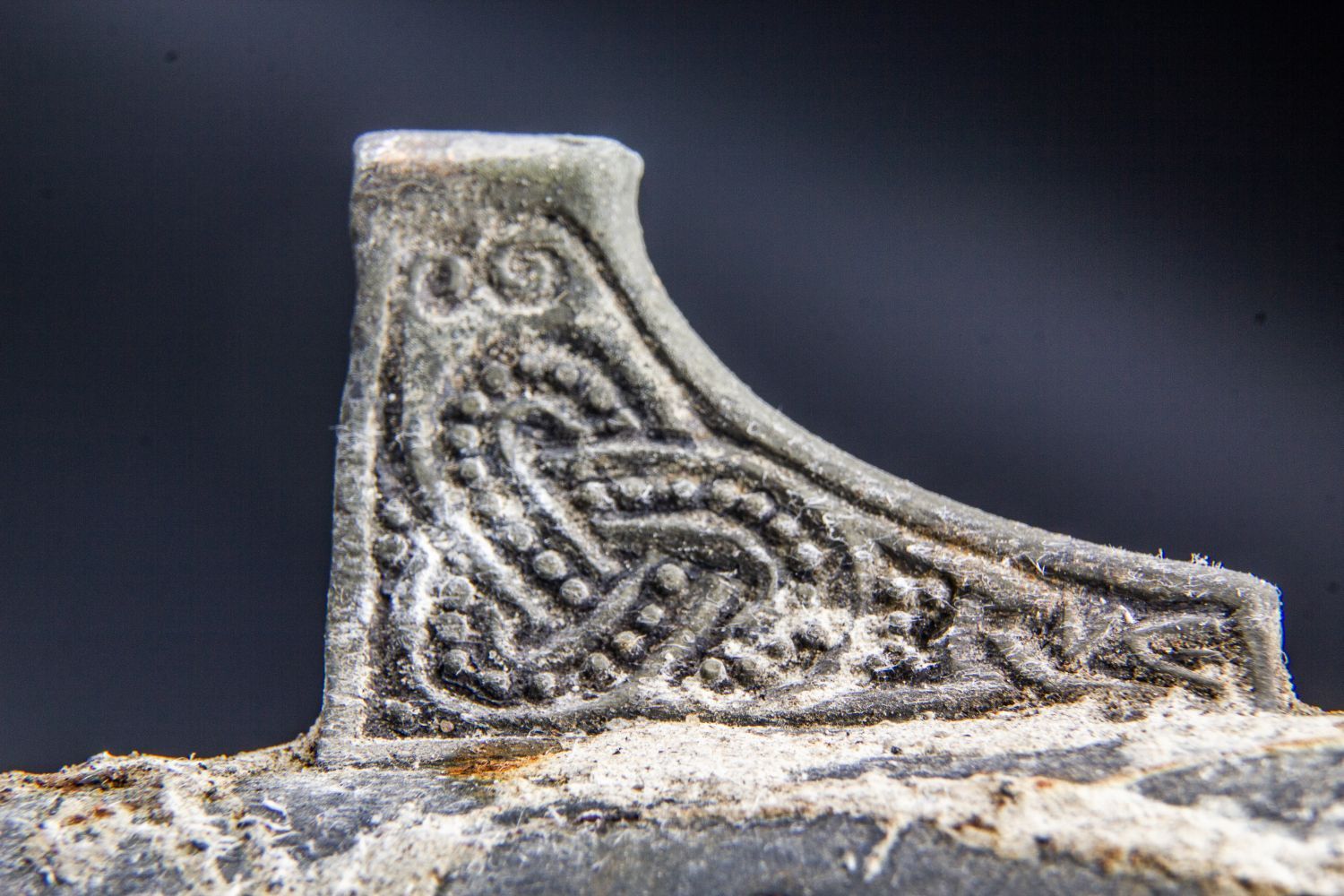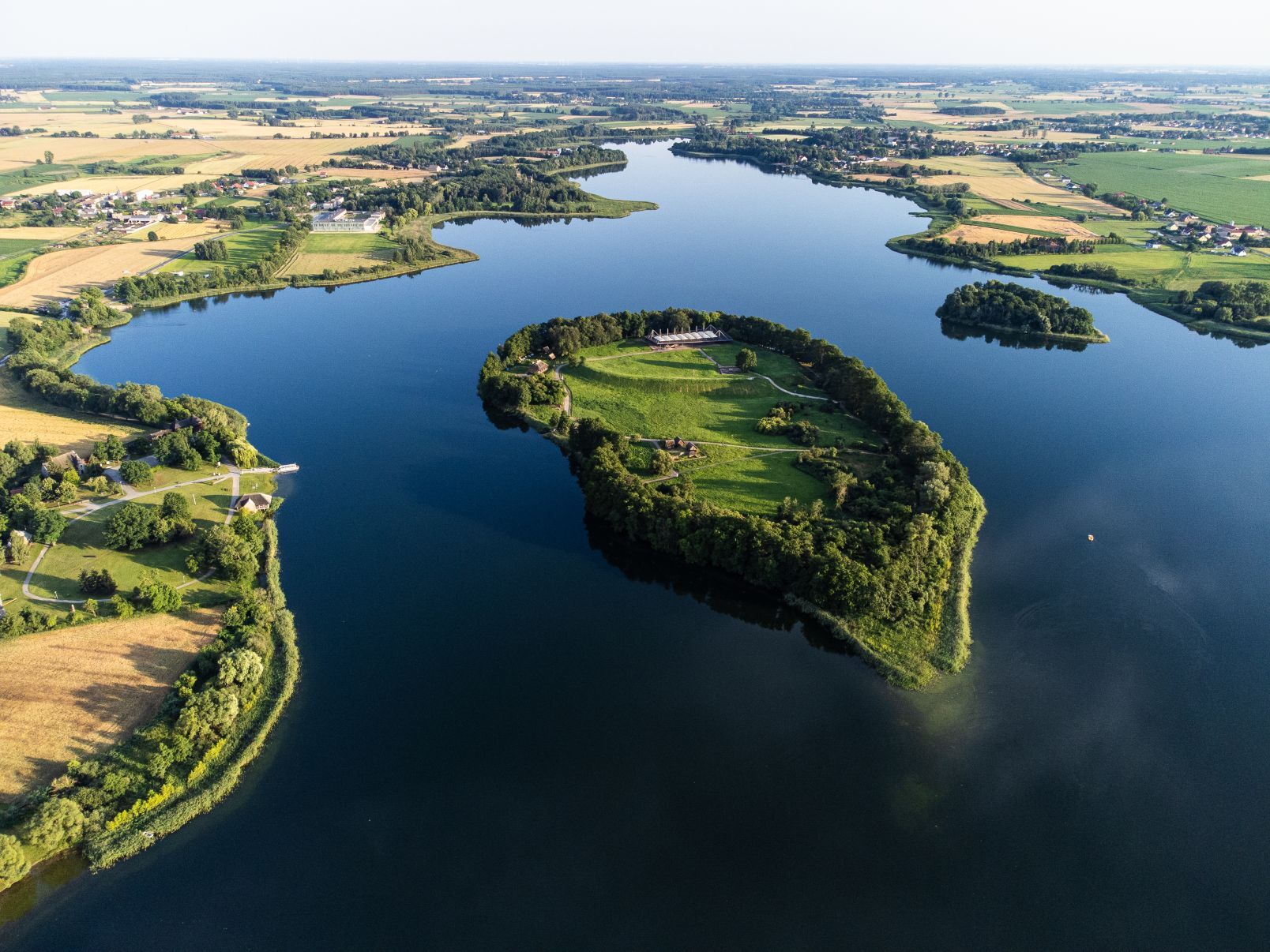Medieval spear pulled from Polish lake may have belonged to prince or nobleman
Four medieval spearheads have been found in Lake Lednica in Poland. One may have belonged to a nobleman or prince.

Underwater archaeologists have recovered four medieval spearheads from Lake Lednica in Poland.
One of the spearheads is gilded with precious metals and features elaborate decorations, suggesting it may have belonged to a nobleman or prince, the archaeological team said in a translated statement.
It is "plated with gold, silver, bronze, and other metals, and its surface is intricately decorated with spiral and triskelion motifs [interlocking geometric designs]," the team said in the statement. There are also wings near the base of the spearhead.
The spear itself "may have served as a symbol of power, the insignia of a high-born warrior, or a ritual object," the archaeologists said, but it was likely not intended for use in battle.
The smallest of the newly found spearheads is still attached to a 6.5-foot-long (2 meters) shaft made of ash wood. "This is rare, as only two spears from Lake Lednica have such a well-preserved shaft," Andrzej Pydyn, an archaeology professor at Nicolaus Copernicus University and director of the university's Center for Underwater Archaeology, said in the statement. Additionally, "the weapon was tipped with an antler ring, making it a unique artifact," Pydyn said.

Another spearhead is "slender and delicate," and it "resembles a willow leaf — a shape common throughout early medieval Europe," the team said. The fourth spearhead was "made using the welded technique, which involves repeatedly forging together a soft, low-carbon steel with a hard, high-carbon steel, giving it superior combat properties," they added. "It could be said that spearheads forged in this way represent the highest level of technology at the time, used throughout Europe."
Lake Lednica is well known for the wealth of medieval weapons found in its waters. Divers from Nicolaus Copernicus University have been exploring the waters beneath the lake for 40 years and have found roughly 145 axes, 64 spearheads and eight swords, according to the statement.
Get the world’s most fascinating discoveries delivered straight to your inbox.
Why the lake has so many weapons is a matter of debate. One theory is that it's related to conflicts that broke out after the death of King Mieszko II in 1034.
"According to accounts, the Czech prince Bretislaus [also spelled Bretislav] invaded the country at that time, sacking Gniezno and most likely also the castles in Poznań and Ostrów Lednicki," the team said in the statement. "Some of the weapons may have fallen into the water during fighting on the bridges connecting the island to the mainland and, most likely, on boats."
Another theory is that the weapons were ritual offerings made to appease deities. Around 1,000 years ago, people in Poland were converting to Christianity, but pagan practices were performed for a sizable part of the Middle Ages there.
The team is conducting macro X-ray fluorescence research, which may reveal more about the spearheads' chemical composition and thus how and where they were made. The exploration of the lake continues.

Owen Jarus is a regular contributor to Live Science who writes about archaeology and humans' past. He has also written for The Independent (UK), The Canadian Press (CP) and The Associated Press (AP), among others. Owen has a bachelor of arts degree from the University of Toronto and a journalism degree from Ryerson University.
You must confirm your public display name before commenting
Please logout and then login again, you will then be prompted to enter your display name.


